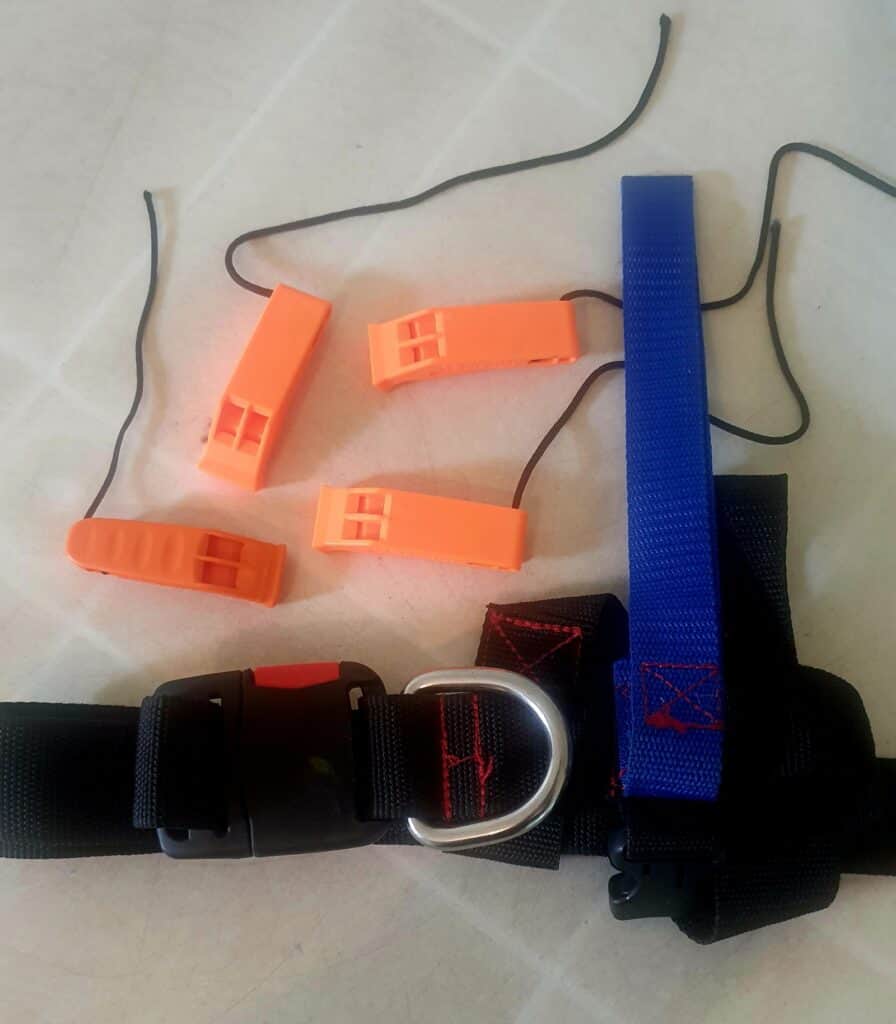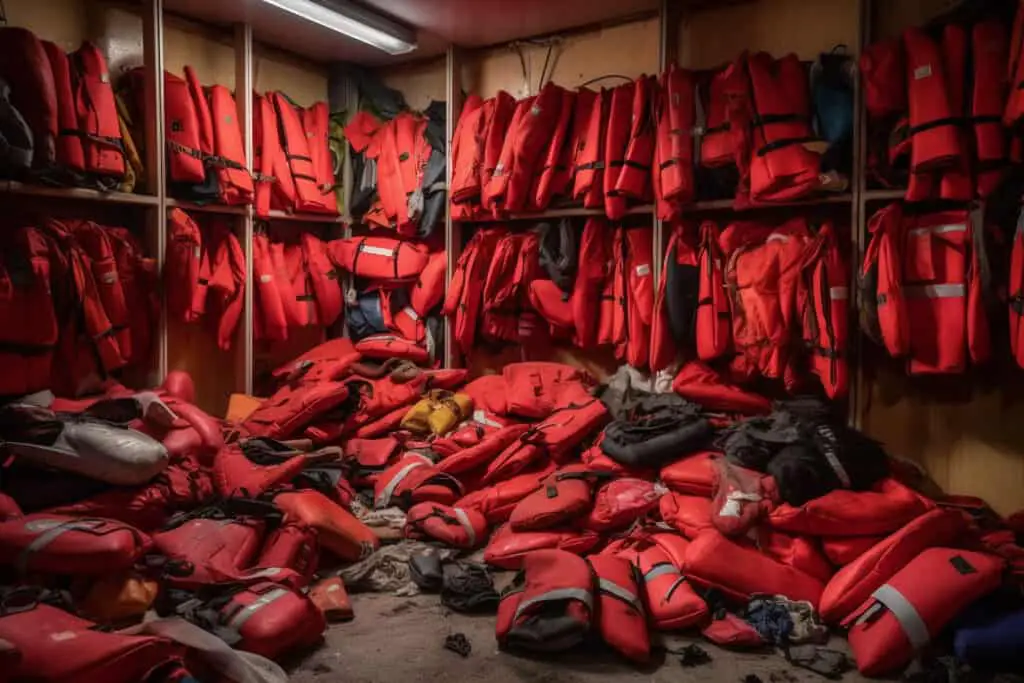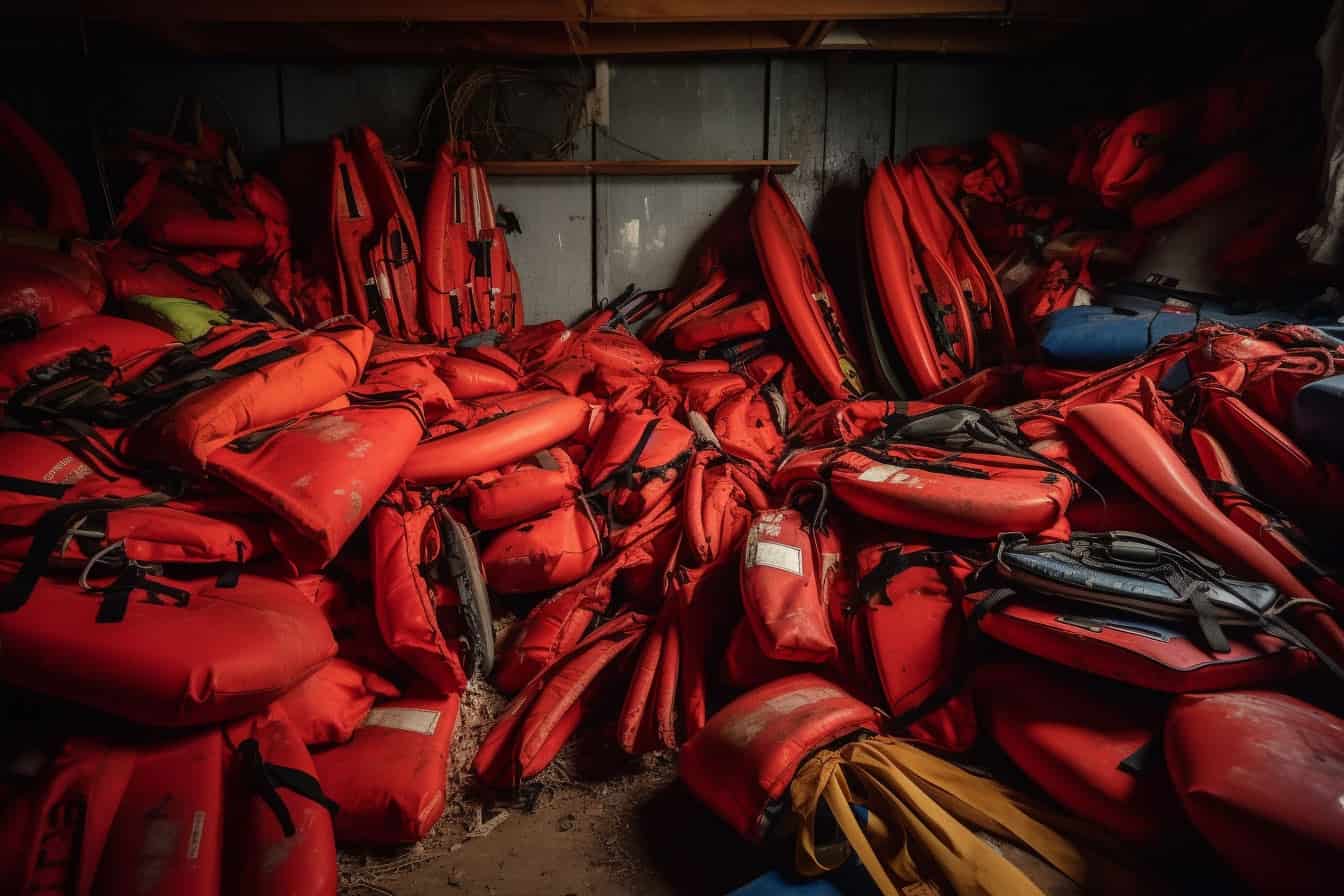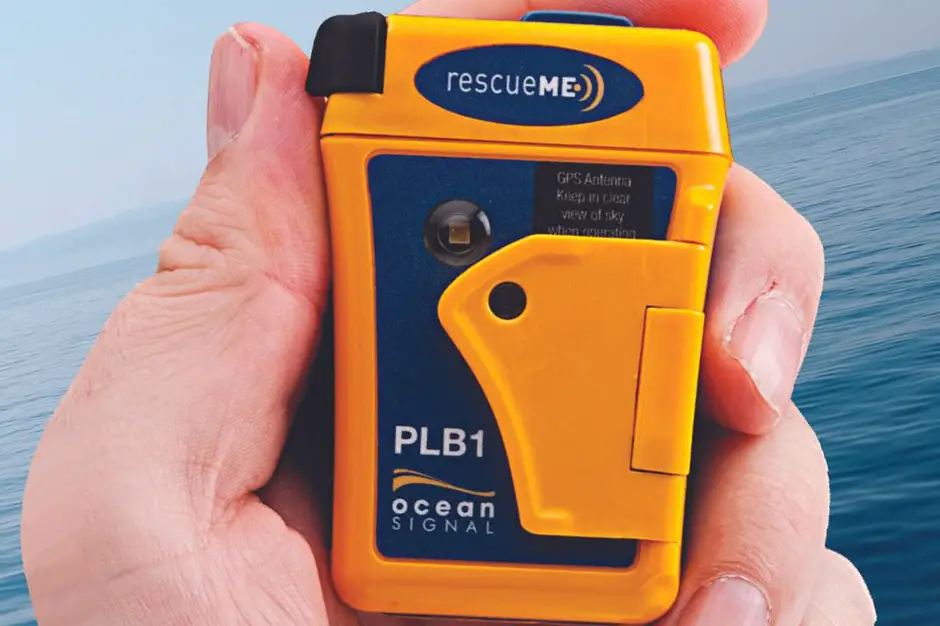Life jackets are crucial safety equipment for anyone participating in water sports or boating activities. They are designed to keep the wearer afloat and provide vital protection in an accident.
However, as with any piece of equipment, life jackets have a limited lifespan and will eventually need to be replaced. This raises the question of what to do with old life jackets once they are no longer suitable for use.
The problem with old life jackets is that they cannot simply be thrown away in the trash like other types of waste. Most life jackets contain foam materials that can break down over time and release harmful chemicals into the environment. Additionally, improperly disposed-of life jackets can pose a drowning hazard if they end up in waterways.
In some cases, old life jackets may also be damaged or no longer meet current safety standards, which means that they cannot be donated or reused for their original purpose. That doesn’t mean you’re out of options, though.
Reuse options
Life jackets are designed to last for several years, but eventually, they must be replaced. While some may choose to dispose of them in the trash or dump them in waterways, there are several eco-friendly and useful ways to repurpose old life jackets.
Donate to local boating clubs or organizations for demonstrations only
One way to ensure that your old life jackets go towards a good cause is by donating them to local boating clubs or organizations for demonstrations only on land however these should be clearly marked as demo only.
Another option is contacting organizations that work with recycle items.

Recycling Options
Contact Local Recycling Centers
The first place to check is with local recycling centers. Many centers accept foam materials, which is commonly found in life jackets.
However, not all recycling centers accept foam materials due to the difficulty in recycling them. Do some research beforehand and find out which facilities accept foam.
It’s important to note that not all types of foam are suitable for recycling. For example, expanded polystyrene (EPS), also known as Styrofoam, can be difficult to recycle due to its structure and chemical composition.
On the other hand, extruded polystyrene (XPS) foams can be recycled through specialty programs. Before contacting a local recycling center about life jacket disposal, make sure you know what type of foam your jacket is made from.
Check with Manufacturers
Some manufacturers may offer discounts on new gear when consumers send in their old equipment for proper disposal. This incentivizes responsible disposal while making it more affordable for individuals who need new safety gear.
Disposing of old life jackets properly is key to protecting our environment and ensuring the safety of water enthusiasts everywhere. By checking with local recycling centers and manufacturers’ programs you can ensure your used equipment will be disposed of properly and responsibly while also supporting a sustainable future for us all.
Straps and Whistles
Can be used by campers, local sports clubs.

Disposal options
Check with local waste management facilities for proper disposal guidelines
One of the best ways to figure out how to dispose of your life jacket is by contacting your local waste management facility. They will have specific instructions on how and where to dispose of the material safely.
Some areas may require you to drop off the life jacket at specific locations, while others may have hazardous waste collection days. It’s essential to follow these guidelines because certain materials in life jackets can be harmful if they end up in a landfill or waterway.
For example, foam materials found in some life jackets can release toxic chemicals when exposed to high temperatures or sunlight. By following appropriate disposal guidelines, you help prevent potential harm and reduce environmental pollution.
Do not throw away in regular trash or dump in waterways
It’s vital not to throw away old life jackets with regular trash or dump them in waterways. This behavior can harm animals and marine life that might mistake the material for food or get tangled up in it.
Not only does this cause harm and destruction for animal populations, but it also pollutes our planet. Instead, take the time and effort needed to properly dispose of your old life jacket through responsible means like recycling or contacting a hazardous waste collection center.
These centers are designed specifically for handling materials like old life jackets with care, ensuring that they don’t harm animals or pollute our environment further. By taking responsibility for disposing of your old life jacket appropriately and educating others on proper disposal practices, you can help protect our planet from unnecessary pollution while ensuring that any potential hazards are handled safely and responsibly.
Can Life Jackets Be Re-inflated or Repaired?
Life jackets play a crucial role in water safety, but accidents can happen, leaving one wondering how life jackets inflate. Fortunately, these vital devices can often be re-inflated or repaired. By locating the inflation mechanism, inspecting for damage, and following manufacturer guidelines, it is possible to restore life jackets to their original functionality. Remember to regularly check and maintain life jackets to ensure they provide the necessary buoyancy in emergency situations.
Safety Considerations
Importance of Checking Expiration Dates and Jacket Condition
The US Coast Guard requires that all life jackets have an expiration date of no more than five years from the date of manufacture.
Beyond this time frame, the materials may become degraded and not provide adequate buoyancy in case of emergency. In addition to checking the expiration date, inspecting the life jacket for any signs of wear or damage is important.
Look for tears or punctures in the fabric or foam, loose straps or buckles, and signs of mold or mildew. If you find any damage, it is best to dispose of the life jacket properly rather than trying to repair it yourself.

Proper Storage and Maintenance Tips
Proper storage and maintenance are key to ensuring that your life jackets last as long as possible and remain in good condition. After each use, rinse off any saltwater or dirt with fresh water and allow the life jacket to air dry completely before storing. Keep your life jackets out of direct sunlight and away from extreme temperatures when storing them.
Ideally, they should be stored in a cool, dry place without being crushed or distorted by other objects. Regularly inspect your life jackets for signs of wear or damage, even when unused.
If you notice any issues during your inspections, take care of them immediately rather than waiting until your next outing on the water. By following these safety considerations for old life jackets, you can help ensure their continued effectiveness during emergencies while extending their usable lifespan for as long as possible.






Leave a Reply